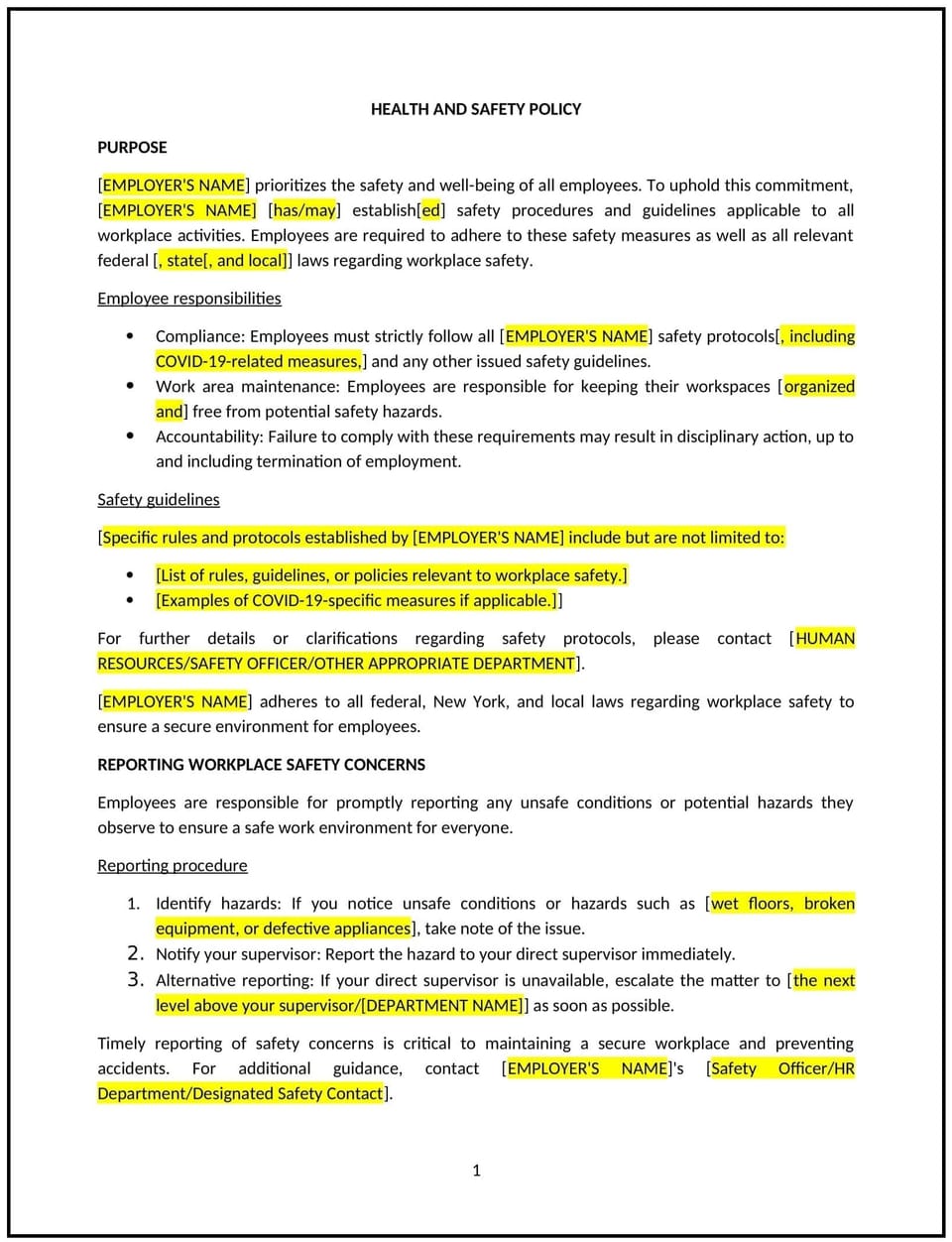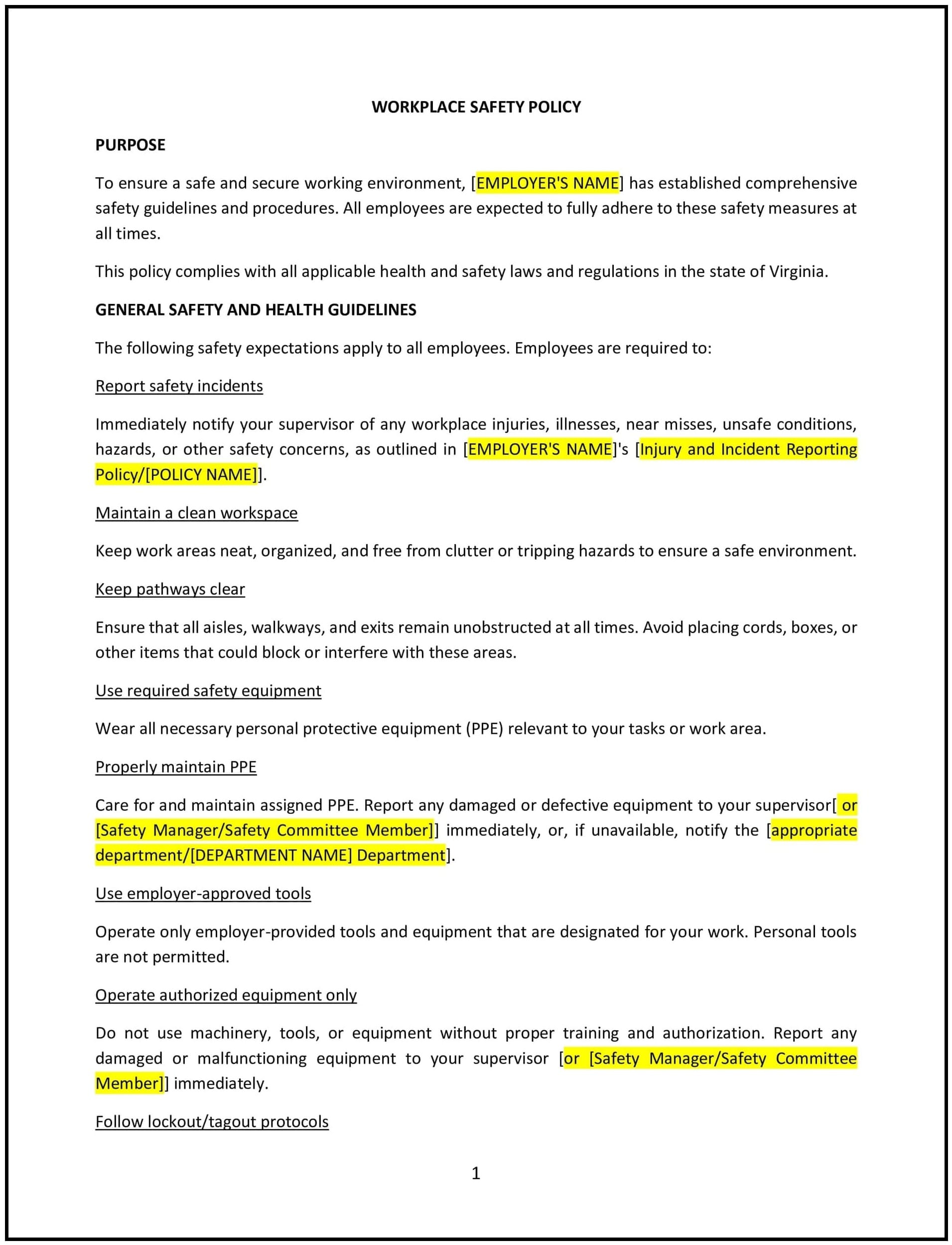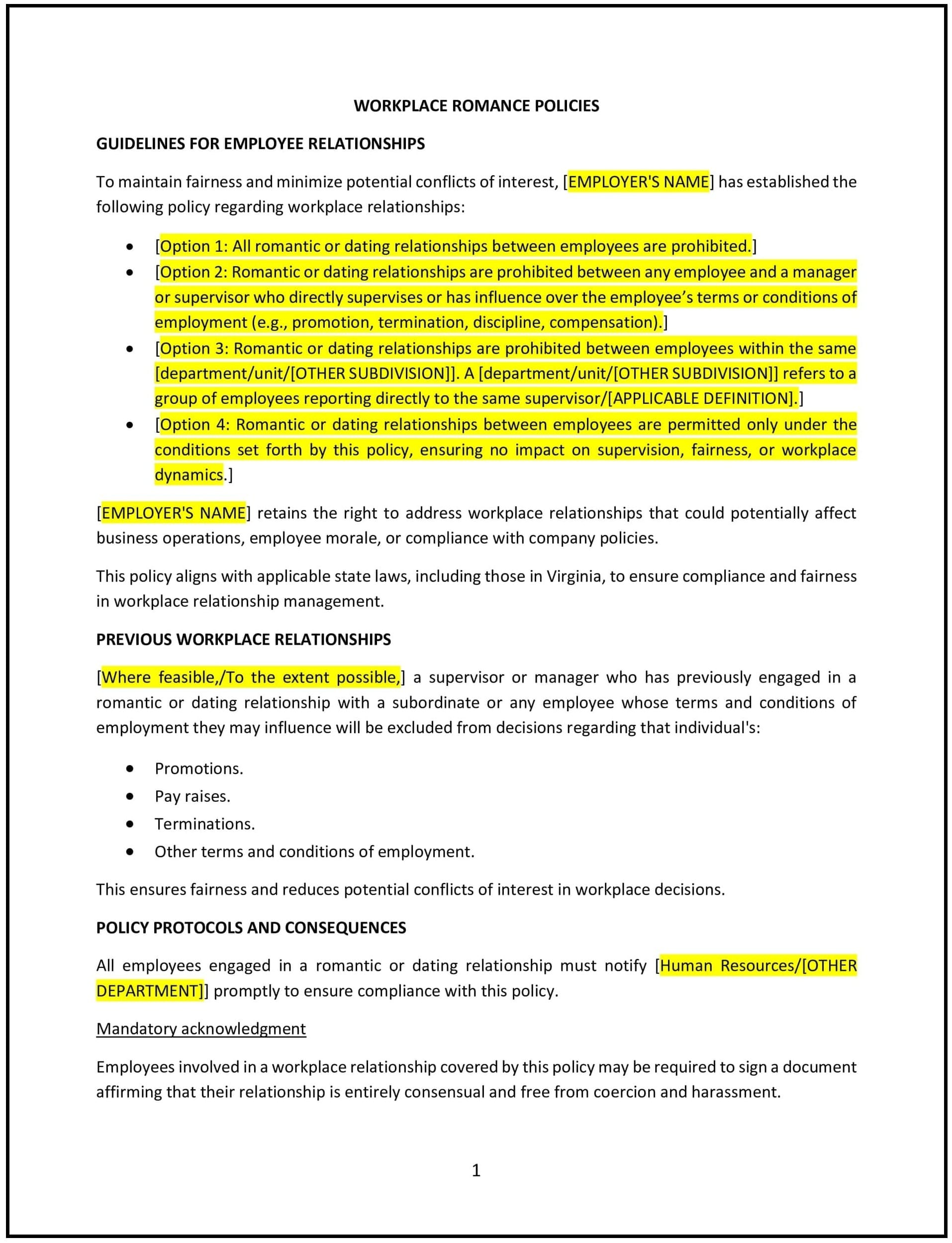Health and safety policy (New York): Free template

Health and safety policy (New York)
This health and safety policy is designed to help New York businesses create a structured approach to maintaining a safe and healthy work environment. Whether businesses are managing routine operations, addressing specific workplace hazards, or complying with New York State Occupational Safety and Health (NYOSH) requirements, this template helps ensure all critical components are addressed.
By using this template, businesses can protect employees, minimize risks, and demonstrate a commitment to workplace safety and well-being.
How to use this health and safety policy (New York)
- Identify workplace hazards: Conduct regular risk assessments to identify potential hazards, such as equipment issues, chemical exposures, or unsafe practices.
- Define roles and responsibilities: Clearly outline the responsibilities of employees, supervisors, and management in maintaining a safe workplace.
- Establish safety procedures: Provide guidelines for emergency response, equipment usage, and day-to-day safety practices tailored to the specific needs of the workplace.
- Include training requirements: Detail the required safety training for employees, including initial onboarding and ongoing refresher courses.
- Monitor and review compliance: Implement a system for monitoring adherence to safety protocols and regularly review the policy to address evolving workplace risks.
Benefits of using a health and safety policy (New York)
This policy offers several benefits for New York businesses:
- Protects employees: A clear health and safety policy reduces workplace injuries and illnesses by promoting safe practices.
- Enhances compliance: Aligning with NYOSH and federal OSHA regulations helps businesses avoid fines or legal liabilities.
- Improves productivity: Employees working in a safe environment are more focused and efficient, leading to higher productivity.
- Builds trust: A strong commitment to health and safety fosters trust among employees, customers, and stakeholders.
- Reduces costs: Proactively addressing safety issues minimizes expenses related to accidents, such as medical costs and workers’ compensation claims.
Tips for using this health and safety policy (New York)
- Conduct regular inspections: Schedule routine safety inspections to identify and address potential hazards before they escalate.
- Communicate clearly: Share the policy with employees through handbooks, training sessions, and workplace postings to ensure accessibility.
- Provide necessary resources: Ensure employees have access to the equipment, tools, and protective gear needed to perform their work safely.
- Encourage employee feedback: Create channels for employees to report safety concerns or suggest improvements to workplace safety measures.
- Update regularly: Review the policy at least annually to ensure compliance with New York State and federal safety regulations and address new workplace risks.
Q: What should be included in a health and safety policy?
A: A health and safety policy should include hazard identification, roles and responsibilities, safety procedures, training requirements, and compliance monitoring processes.
Q: Are businesses required to have a health and safety policy in New York?
A: While not all businesses are legally required to have a written policy, having one demonstrates a proactive commitment to employee safety and can help meet NYOSH standards.
Q: How can businesses ensure employees follow safety protocols?
A: Businesses can provide clear instructions, conduct regular training, and implement systems for monitoring compliance with safety procedures.
Q: What should businesses do if an accident occurs?
A: In the event of an accident, businesses should follow their emergency response plan, provide medical assistance as needed, and document the incident for review and improvement.
Q: How often should the health and safety policy be reviewed?
A: The policy should be reviewed annually or when there are changes to workplace operations, safety regulations, or identified risks.
This article contains general legal information and does not contain legal advice. Cobrief is not a law firm or a substitute for an attorney or law firm. The law is complex and changes often. For legal advice, please ask a lawyer.


